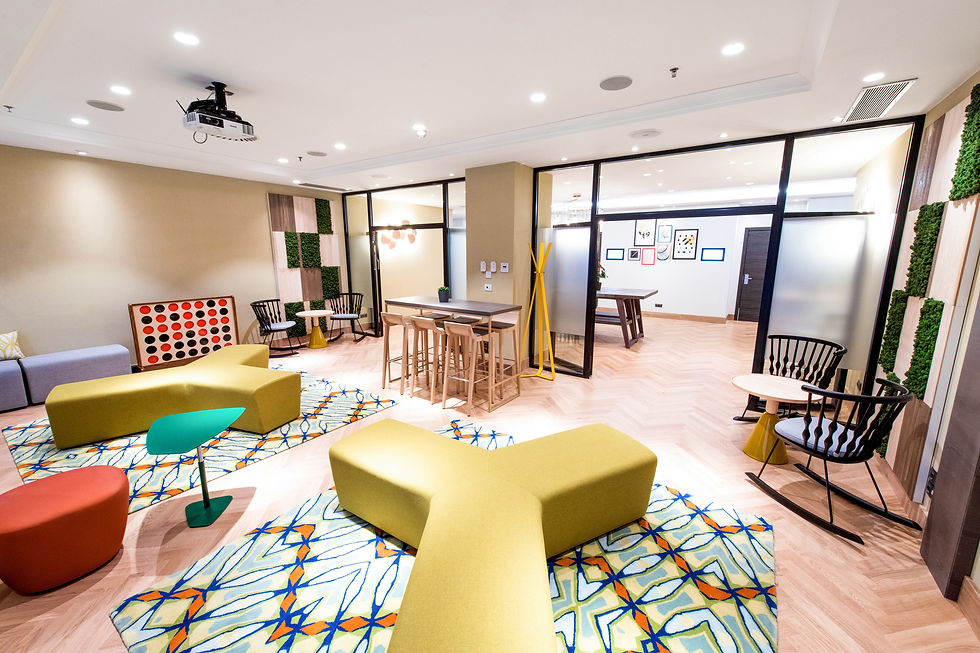
Hilton Meetings & Events
Context: Business Problem
When I first started at Hilton, I was asked to lead Experience Design strategy for a new "Meetings & Events" project.
The challenge we faced: a large majority of Hilton's small hotel meeting rooms were severely underbooked.
I partnered closely with the Product Owner and presented a human-centered design strategy. This was an opportunity to introduce a design thinking approach to a 100-year old company, energize the core team and provide actionable solutoins to leadership. I suggested a 5-Day Design Sprint to move quickly through research, problem identification, ideation and testing with real customers. Ultimately, we delivered a compelling, innovative new product for Hilton's portfolio of Full Service brands based on research and real customer testing.
My role in this project was leading the strategy for a cross-functional product team, facilitating a week-long design sprint (combining research, problem identification, ideation and prototype testing), and continuing to partner with the Product Owners to create the final deliverables.
Business Goals
Increase bookings for Hilton's portfolio of small meeting & event spaces
Outcomes
2.5 Higher conversion rates
36% Increase in price premiums
x2 Willingness to pay for new meeting room designs
New Hilton Brand standards
Project Team
UX Lead (me)
Brand Team
Customer Experience & Innovation Product Team

Design Sprint
Pre-Sprint: Collecting Data
In preparation for the design sprint, we analyzed existing customer data and did a competitive analysis to add additional insight:
• Existing high-level customer data from meeting attendees and meeting planners revealed that user needs and pain points fell into four categories: Service, Technology, Food & Beverage, and Environment
• Key trends in the competitive landscape revealed that the industry was changing: traditional and non-traditional competitors like Convene and WeWork were creating venues that were more exciting, more functional and easier for customers to reserve
• We created and sent out new surveys to meeting attendees and meeting planners to fill in any unanswered questions or gaps
Design Sprint Day 1: Research & Empathize
I lead short 30-minute interviews with our users while the rest of the room created on-the-spot Empathy Maps, Journey Maps and identified pain points or challenges. For this project, our key personas included meeting/event attendees (and bookers) and professional meeting planners.
Takeaways
So what did we find? We identified trends in unmet needs for each of our users. As a team, we dot voted to then prioritize the most important problem to solve. Here are a few of the major pain points:
• Meeting Attendees feel uninspired and unmotivated by the boring meeting spaces ("beige boxes") that are found at most hotels
• Meeting/Event Planners often steer clear of hotel venue spaces because "they're all the same and there's nothing interesting about it"
• Meeting Attendees (Bookers) aren't able to find a small and book meeting rooms quickly and easily
• Sales Managers are using a slow RFP process and don't have a way to quickly and easily book small meetings or events for customers
For this Design Sprint, we aligned around the first challenge (above) and formed our problem statement. They other major pain points were backlogged and tackled later on.






How might we design a space that energizes and inspires meeting and event attendees?




Design Sprint Day 2: Create Solutions
On Day 2 we turned our focus to solutioning, pulling "energizing and inspiring" ideas from inside and outside of the hospitality industry including the outdoors (natural light), coffee shops, art galleries and music/concerts. Our goal was quantity over quality. As many ideas as possible.
Design Sprint Day 3: Narrow Solutions
With a ton of ideas from Day 2, I led the team to narrow down the ideas, vote on the ones that would best solve our problem and build out our sketches with even more detail.
Steps in process:
• Quantitative: Survey & Data Analysis
• Qualitative: 1-on-1 Interviews
• Research Synthesis
• Personas
• Journey Mapping
• Affinity Mapping
• Problem Identification
• Creative Ideation




Design Sprint Day 4: Prototyping
On Day 4, we created our prototypes. We chose to use a fake, but realistic brochure featuring several of the inspirational ideas from our ideation. Our slogan for these rooms: "Book at experience. Not just a room." The lo-fi prototypes helped reduce testing costs and make sure we were headed in the right direction before investing in redesigning a physical space. Later on, we staged real-life meeting and event rooms and tested with real customers.
Design Sprint Day 5: Testing
We tested our prototypes with real customers and observed their reactions.
Takeaways
Our goal was to better understand how the prototype made meeting attendees feel and why. Overwhelmingly, respondents used words like "productive" and "collaborative." Later on, the real-life test showed:
• x2.5 higher conversion rates
• 36% increase in price premiums
• x2 willingness to pay for new meeting room designs
Steps in process:
• Finalize Prototypes
• Iterative Customer Testing (using lo-fi • prototypes in interviews and guest intercepts)
• Staged-Room Testing (later on)
Summary
The five-day design sprint not only drove ripples of excitement and engagement throughout the organization, but it also paved the way for follow-up workshops and workstreams to solve other challenges we uncovered in this project. Our final deliverables were presented in the form of:
• Meeting & Event Room Concept Designs: Visual renderings outlining new designs and features for a new "Meeting & Event" product
• Design Sprint Artifacts: Journey Maps, Personas, Service Blueprints, Qualitative Results, Quantitative Results
• User Need-to-Solution Mapping Playbook: Key user needs matched with recommended solutions
• Hotel Owner How-To Playbook: Plans and recommendations on how to create (or improve) a unique meeting and event space
• Technology Packages: New technology products for hotel properties to incporate into their meetings and events spaces







